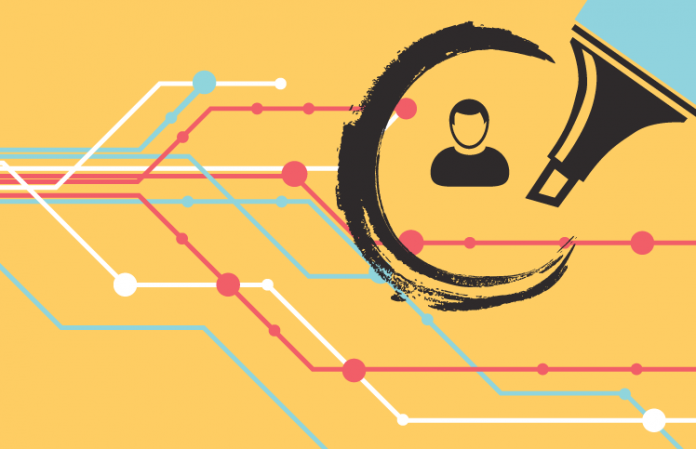
So far, in our omnichannel series, we looked at the top challenges that contact centers face when transitioning their strategy from multichannel to omnichannel, the important first steps to take on your journey, and how to prioritize customer channels.
In today’s post, industry experts discuss how the customer’s experience through multiple channels can be tracked and measured.
ANNA CONVERY
Chief Marketing Officer & Executive Vice President of Strategy, OpenSpan:
An omnichannel strategy poses a myriad of different challenges when it comes to knowing what to track and why. Global enterprises are spending billions of dollars on analytics solutions. The “Big Data Revolution” has opened up a world where businesses can measure anything they wish, but what is the point of collecting data if it is difficult to organize and you don’t understand how you’re going to use it?
To truly know what is going on within each channel, it really involves many data points, including right down into the activity and transactions that take place on the desktop—your customers interacting with your agents and technology and vice versa. Having intelligence collected from desktop activities can help deliver a broad set of data that can be used to expose key areas of improvement, pinpoint “gold standard” behaviors that are resulting in increased revenue per transaction and trends over time that can give context into the customer journey and result in positive customer experience.
MADELYN GENGELBACH
Vice President, Strategic Marketing, inContact:
There is no magic technology that can instantly solve the customer journey/experience. It is still about agent interaction when the stakes are high, and tracking these interactions. Start with where you are and get your house in order, then expand further and further. Get your own backyard garden cleaned and weeded and branch out from there.
First, the most basic step is that multiple channels should all be managed from one platform. Otherwise you don’t have a unified reporting system to measure the channels. Chat, email and voice are the top three channels by far, so let’s use those as examples. You need to have them all on one platform and the same system. They must be working well so that you can manage, track and measure how your agents are doing.
From here you can move into what is happening with your customers and improve upon their experiences. What channels are customers employing and what takes place in these channels? Here you start to build customer histories in the CRM—agents need to write the specific interaction sequence back into the CRM so that it is available to all of the other agents.
We have seen success with contact center leaders starting at their center of excellence to get their sea legs. Set up current channels and branch out with agents who are eligible for that additional channel. Take an incremental approach.
Next step is to measure your situation. Get all your channels routed together and transparent, then add the flexibility to route from generalists to specialists and look at the interactions with customers. In the end what a customer really wants is a great experience. A lot of people are talking about a grandiose journey solution. But these are uber expensive and not about people.
Create a micro-journey, like moving from chat to phone. Begin with basic reporting out of your CRM and ACD. Make the micro-journey visible to agents so they can understand interactions that have been taking place prior to them. Customers may expect to stick with the same agent from chat to phone, so if you have all of the agents on the same platform you can recognize the caller, see them and route them to that agent who can handle both of these channels. Again, here you have technology and people. Neither can stand alone.
BRIAN KOMA
Vice President & Practice Leader, Customer Experience, Verint Systems:
This is a very important issue, because it forces you to determine how you look at the customer journey. A journey-mapping exercise will help you to understand how a typical customer comes into the organization. There are products out there that will help you to do this, but a lot of it is manual in nature because you’re trying to identify how most customers are interacting with your brand: What is a typical path that they’re taking to interact with me?
Identifying a journey that a typical customer will take is part of the first step. Some of this will involve conducting customer interviews, and some of it will involve tracking customers using tools that will help you to understand their pathway through the website or how they arrived at the contact center.
The next step is assigning a persona (or fictionalized person) to that journey. This does a couple of things: It helps us internally to create a shorthand view of how to refer to that customer. For example, instead of referring to a customer profile as a small-business owner who has a billing problem with a particular software product, maybe that is best personified by an individual named Beth. Beth has certain attributes that everyone agrees on: She works for a company that employs 10 people or less, has been a customer for two years or more, she purchases products on a monthly basis, etc. Identifying a common persona will help you to communicate to others in the organization, “People like Beth.”
Finally, you need to identify those things that you can connect on the back end. One of the top challenges is that the systems which many organizations use to track website visitors and to track DNIS or ANI are not necessarily the same. So how can we now take that data and associate a specific telephone number or email address with Beth, and then start to look at all of the interactions that she is having with our brand? That’s a very hard thing to do. We are making a lot of progress in this area, but it involves a combination of technology and consulting, because every company is different, the journeys are different and the customers are different. But the key is being able to look at things from a holistic standpoint.
BRAD SNEDEKER
Innovation Center Manager, Calabrio:
Integration across channels, including off-line interactions, must have full customer interactions tracked. This can achieved through loyalty programs and receipt emailing capabilities. In addition, a good CRM environment that allows for customer tracking by channel is critical to the success of any omnichannel strategy. This resource must also be available to all customer-facing employees to ensure that each and every interaction from that customer is available at their fingertips. The ultimate goal is that this level of tracking is seamless to the customer-facing employee so that it is transparent to the actual customer.
To read the full Q&A panel with more insights on the omnichannel evolution and how it will impact your center, download the article here.



